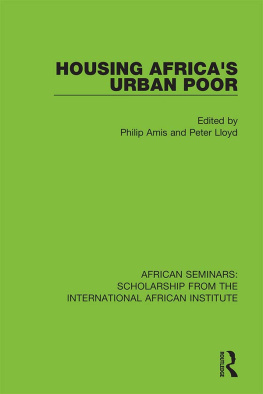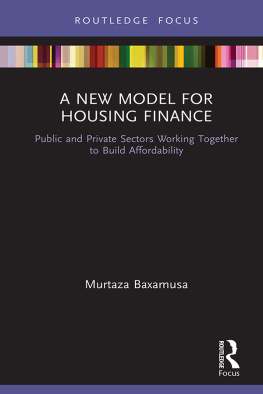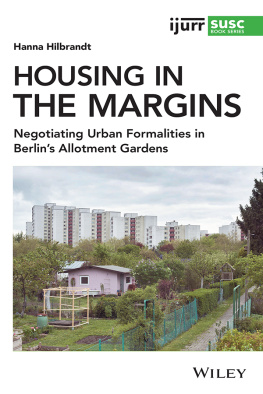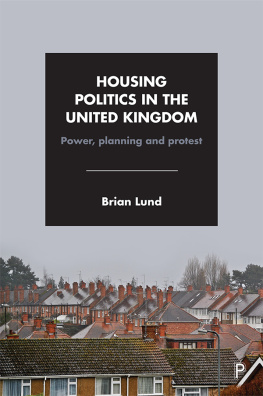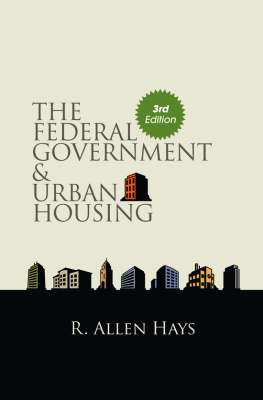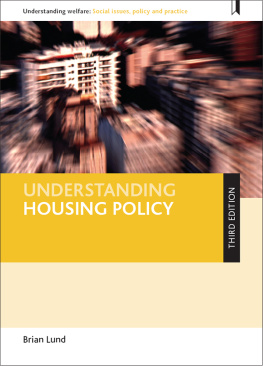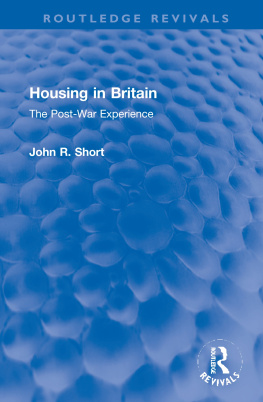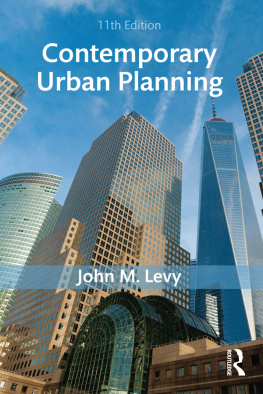URBAN HOUSING POLICY
URBAN HOUSING POLICY
William G. Grigsby
Louis Rosenburg
A Center for Urban Policy Research Book
First published 2012 by Transaction Publishers
Published 2017 by Routledge
2 Park Square, Milton Park, Abingdon, Oxon OX14 4RN
711 Third Avenue, New York, NY 10017, USA
Routledge is an imprint of the Taylor & Francis Group, an informa business
Copyright 1975 by APS Publications, Inc.
All rights reserved. No part of this book may be reprinted or reproduced or utilised in any form or by any electronic, mechanical, or other means, now known or hereafter invented, including photocopying and recording, or in any information storage or retrieval system, without permission in writing from the publishers.
Notice:
Product or corporate names may be trademarks or registered trademarks, and are used only for identification and explanation without intent to infringe.
Library of Congress Catalog Number: 2012014039
Library of Congress Cataloging-in-Publication Data
Grigsby, William G., 1927-
Urban housing policy / William G. Grigsby and Louis Rosenburg.
p. cm.
Includes bibliographical references and index.
ISBN 978-1-4128-4844-2
1. Housing--United States. 2. Housing--Maryland--Baltimore.
I. Rosenburg, Louis. II. Title.
HD7293.G73 2012
363.509752--dc23
2012014039
ISBN 13: 978-1-4128-4844-2 (pbk)
Contents
This volume is the outgrowth of a larger inquiry financed by the Office of Economic Opportunity, with supplemental funding provided by the Life Insurance Association of America, through the Real Estate Research Program of the University of California, Los Angeles. Portions of this book were published in mimeograph form in 1971 under the title Housing and Poverty.* The earlier study, which focused exclusively on Baltimore, Maryland, sought to redirect prevailing approaches to housing problems by: (1) expanding the concept of a housing-deprived population to include several types of shelter problems that are usually ignored in policy discussions; (2) placing the exploration of housing problems within a larger policy framework, one which stresses the importance of multiple goals and conflicting interest groups; (3) demonstrating the need to shift public programs away from such heavy concentration on new-construction subsidies and toward more emphasis on preserving the existing stock; and (4) establishing the importance of a number of factors other than low income in explaining the decay of inner-city neighborhoods.
In the years subsequent to the publication of Housing and Poverty it has been gratifying to see many of our conclusions confirmed by later studies. Nevertheless, our original focus was too narrow to provide the policy guidance that is being sought today. In confining our attention exclusively to Baltimore, we failed to suggest differences between that city and newer and smaller communities. In addition, we dwelt too lightly on macro aspects of housing market dynamics. Also, of course, we had nothing at all to say about programs and proposals which have come to the forefront since 1970, particularly housing allowances, revenue sharing, urban homesteading, and housing allocation plans.
The present volume tries to fill these gaps. Five new chapters have been added, two have been deleted, and the remaining ones have been extensively rewritten. Still excluded from our examination of housing issues are several areas of widespread concern which have been extensively covered by others, most notably, the residential construction industry, land development controls, real estate taxation, the emergence of state housing agencies, and recent efforts to increase the efficiency of mortgage markets. We hope, nevertheless, that despite our lack of comprehensiveness, this volume will make some small contribution to the search for solutions to urban housing problems.
The study is the product of a group effort, and several persons besides the authors made important contributions which we should like to mention. Michael Stegman directed our survey of inner-city investors and drafted major portions of . The first household survey was conducted by Audits and Surveys, Inc. Valuable assistance in making the data from the survey usable was provided by Peter Kuner, William McDonnell, Patricia Hammond, Pao-Yu Chou, Warren Howze, and Steven Simkin. The second household survey was conducted by Sydney Hollander and Associates. Robert Pasternak, Marilee Considine, and Margaret Beatty from that organization were particularly helpful to us during this part of the study.
A number of persons contributed ideas and constructive criticism. We would like to mention in particular Margery Baker, Ernest M. Fisher, Oliver Jones, Morton Lustig, Katherine Martini, Chester Rapkin, Louis Singer, Stanely Sugarman, and David Wallace.
Uncounted memoranda and rough drafts were typed and distributed by Judy Bergman, Laura Kessler, Patricia Schaefer, Doris Smith, and Florence Stone.
We save for the last our expression of gratitude to the many persons in Baltimore whose warmth and friendliness, advice and assistance, and unreserved cooperation made the study an unforgettable experience. Although we were strangers intruding on the time of individuals who had a much more intimate grasp of various parts of Baltimores housing problem that we did, at no time were we turned away or made to feel unwelcome, however skeptically our efforts may have been viewed. It would be foolish to attempt to name everyone in the community who helped us. The list would be so long as to be meaningless. We would like to observe, though, that Baltimore is indeed the No Mean City that it has been characterized to be. It is that spirit which must be continuously nurtured if the problems of urban decay and poverty are ever to be solved.
Note
* William G. Grigsby, Louis Rosenburg, Michael Stegman, and James Taylor, Housing and Poverty, Institute for Environmental Studies, University of Pennsylvania, April 1971.
For as long as statistics record and for an even longer time in the memory of man, housing conditions in the United States have been improving. More because of rising incomes than housing programs, American families have experienced a steady upgrading in the quality and quantity of shelter and associated services. Housing that only the rich once enjoyed is commonplace today; by todays standards, most of the population was ill housed at the turn of the century.
Midst this rise, inadequate living accommodations for a portion of the population have stubbornly persisted. In part, this is simply due to the fact that perceptions of what is adequate housing move apace with incomes, making substandard housing for some a perpetual inevitability. Elastic standards are an expression of our societys concern that increments to income and wealth be broadly distributed. In addition, however, many families endure housing deprivations which are severe even with respect to the norms of earlier years.
During the past decade, and especially in the last five years, significant changes in housing conditions, policies, and programs have occurred. These changes have reshaped large parts of the housing market and substantially altered traditional issues and concerns about shelter problems in urban areas. The most significant and unexpected break with the past has been the huge increase in subsidized housing production beginning in 1966. From the passage of the Housing Act of 1937 through the end of the first four years of the Kennedy-Johnson Administrations 28 years later, public housing and related subsidy programs never accounted for more than 5% of housing starts and were frequently in danger of annihilation by hostile Congresses. During President Johnsons second term in office, subsidized production gradually became more important, rising to 10% of total starts. Then during the first four years of the Nixon Administration, it really blossomed forth. Under programs inherited from the Democrats, federally assisted starts jumped to over one-quarter of total residential construction, and in less than four years equalled the aggregate production record of the previous 32. Even though there are now second thoughts about this achievement, resulting in sharp curtailment of activity, retrenchment to the position of earlier years is improbable.





